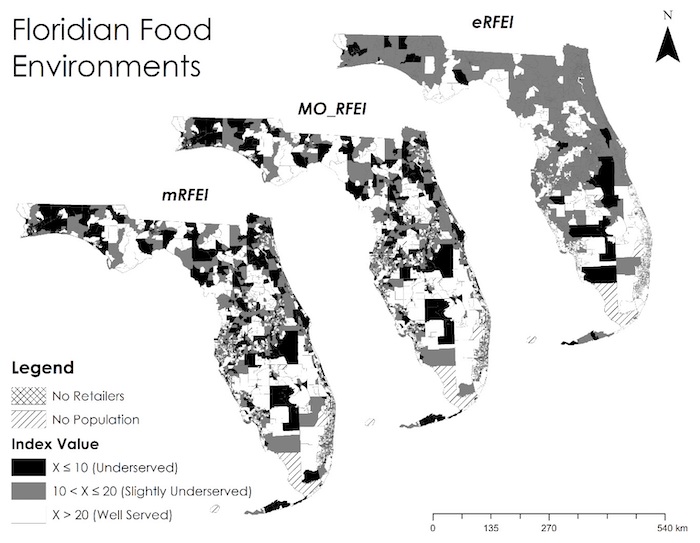
New article first published online: International Journal of Environmental Research and Public Health
ABSTRACT: The Retail Food Environment Index (RFEI) and its variants have been widely used in public health to measure people’s accessibility to healthy food. These indices are purely environmental as they only concern the geographic distribution of food retailers, but fail to include human factors, such as demographics, socio-economy, and mobility, which also shape the food environment. The exclusion of human factors limits the explanatory power of RFEIs in identifying neighborhoods of the greatest concern. In this study, we first proposed a hybrid approach to integrate human and environmental factors into the RFEI. We then demonstrated this approach by incorporating neighborhood commuting patterns into a traditional RFEI: we devised a multi-origin RFEI (MO_RFEI) that allows people to access food from both homes and workplaces, and further an enhanced RFEI (eRFEI) that allows people to access food with different transportation modes. We compared the traditional and proposed RFEIs in a case study of Florida, USA, and found that the eRFEI identified fewer and more clustered underserved populations, allowing policymakers to intervene more effectively. The eRFEI depicts more realistic human shopping behaviors and better represents the food environment. Our study enriches the literature by offering a new and generic approach for assimilating a neighborhood context into food environment measures.